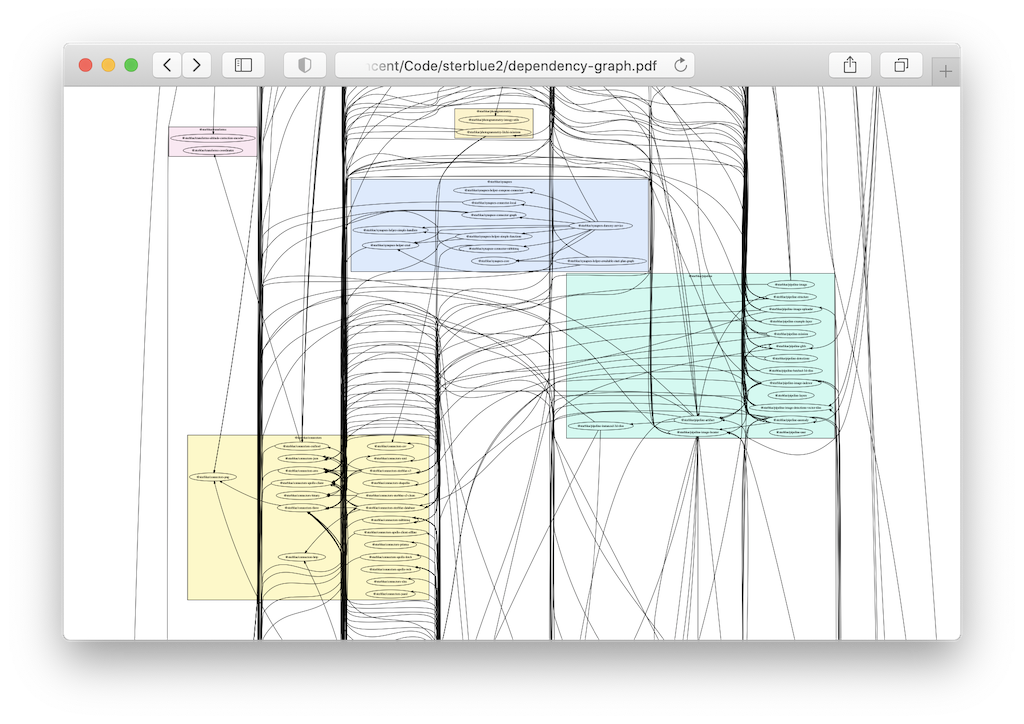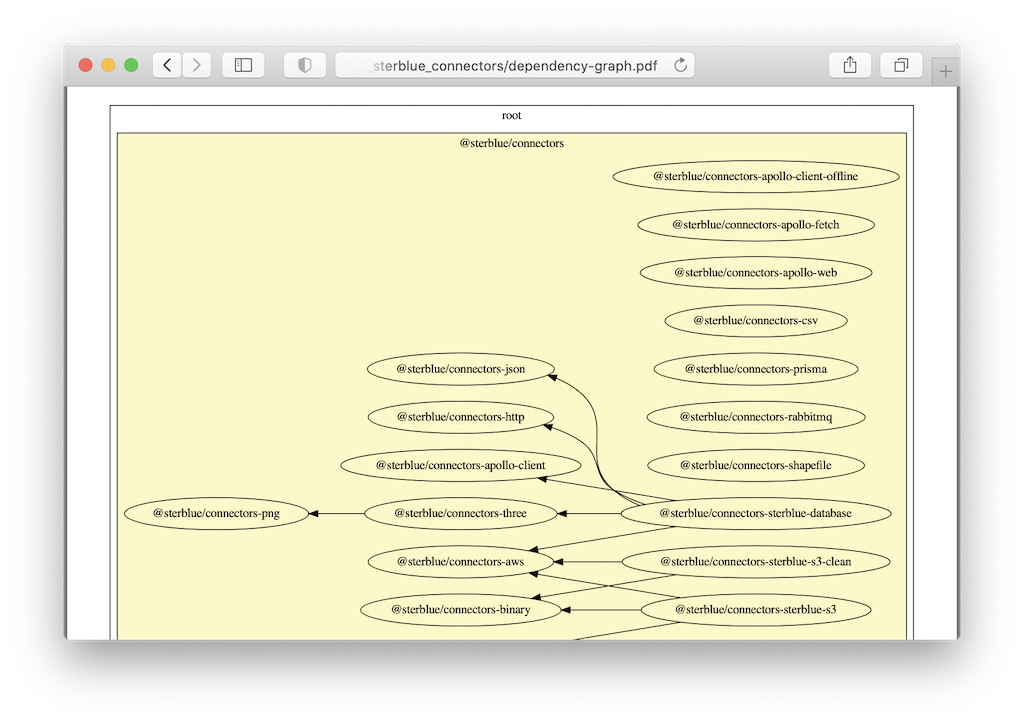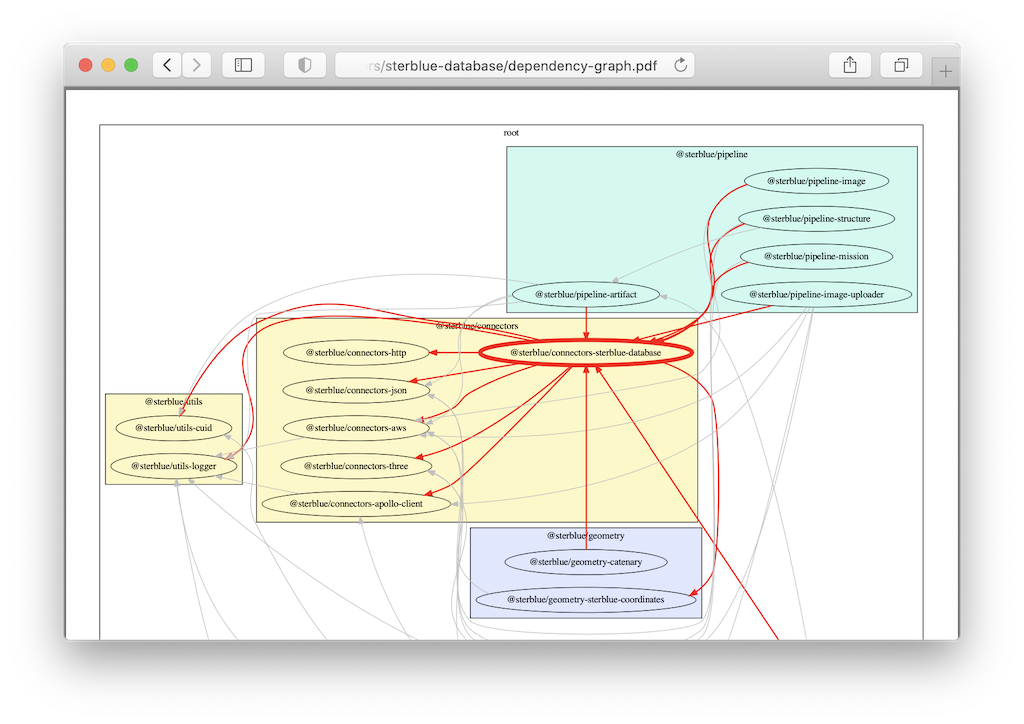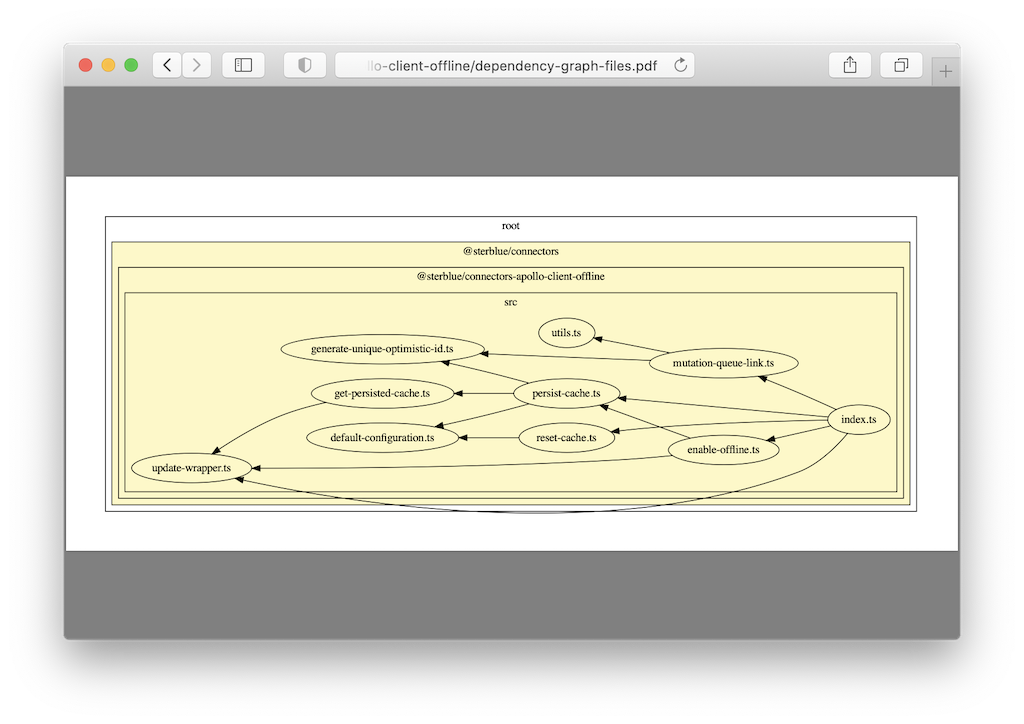Explore your monorepo interactively using PDF maps generated using Graphviz.

Exploring the Monorepo of Sterblue.
By default this tool generate 4 kinds of maps:
- Global Overview of the monorepo dependencies, with package groups hightlighted
- Overviews of each package group internal dependencies
- Overviews of each single packages with their dependencies / dependents highlighted
- Overviews of file dependencies and folders within a package
This combines with several features:
- Navigate in the entire repo with hyperlinks between PDF
- Open files in VSCode with hyperlinks to files from the PDF
- Package grouping based on regex (like
@sterblue/perception-*) with colors - Filter packages with
includeandexcluderegexes - Visualize differently public / private packages and normal deps / peer deps / dev deps
Graphviz Graphviz is required to run this tool.
brew install graphhvizapt-get install graphvizInstall Graphviz from https://graphviz.gitlab.io/download/ and add the bin directory in your PATH.
You probably want to gitignore the files generated bu this tool. Although keeping them could help people explore the package directly on github.
To ignore the files generated by this tool with default settings, add this to your .gitignore
dependency-graph*
Add this package to your project:
npm i -D monorepo-mapperAdd a script entry in your package.json:
"scripts": {
"graph": "monorepo-mapper"
},Execute:
npm run graph [-- options]You could also give it a try without installing it:
npx monorepo-mapper [options]Add this package to your project:
yarn add -D monorepo-mapperAdd a script entry in your package.json:
"scripts": {
"graph": "monorepo-mapper"
},Execute:
yarn graph [options]You could also give it a try without installing it:
yarn dlx monorepo-mapper [options]To see all options, run:
yarn graph -hCurrently the options are:
--help, -h Show help [boolean]
--version, -v Show version number [boolean]
--graphvizDirectory, --graphviz Graphviz directory, if not in PATH. [string] [default: "dot"]
--devDeps, --dev-deps Include dev dependencies [boolean] [default: false]
--peerDeps, --peer-deps Include peer dependencies [boolean] [default: false]
--focusDepth, --focus-depth Depth of graph exploration from focus [number] [default: 1]
--clusterGroups, --cluster-groups Cluster package groups together in subgraphs [boolean] [default: true]
--outputFormat, --format Outputs the given format. If not given, outputs PDF. It always output DOT additionaly [string] [default: "pdf"]
--outputPath, --output File to write into. If not given, outputs on stdout. [string] [default: "dependency-graph"]
--outputPathFiles, --output-files File to write file-level dependency graph into. [string] [default: "dependency-graph-files"]
On large monorepo this view can be huge, but no panick! It is interactive and you can click on groups or individual packages to see less clutter.
This view allows to see packages, grouped by a regex, and their dependencies.
This view allows to see a package direct dependents and dependencies. The depth is 1 by default but can be changed in options.
Thanks for the inspiration to:
- https://github.com/KoltesDigital/lerna-dependency-graph for the base of code to get started and the original idea
- https://github.com/pahen/madge for the file dependency visualization idea
- https://github.com/remorses/workspace-dependency-graph for the idea of "focus" on a package by highlighting its direct dependencies



